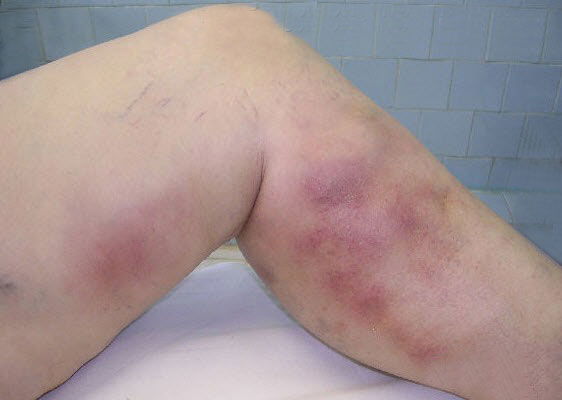
Noticing that one of your legs has suddenly become red, warm, and swollen can be alarming. While some people might think it is just from standing too long or a minor injury, the truth is that this symptom often points to an underlying health issue. In many cases, it requires prompt medical attention. Understanding the possible causes can help you recognize when to seek help and avoid dangerous complications.
1. Deep Vein Thrombosis (DVT)

One of the most serious causes of sudden redness and swelling in one leg is deep vein thrombosis (DVT). This condition occurs when a blood clot forms in a deep vein, usually in the calf or thigh. The blockage prevents blood from flowing properly, leading to pain, swelling, redness, and warmth in the affected leg.
DVT is particularly dangerous because the clot can travel through the bloodstream to the lungs, causing a pulmonary embolism—a potentially life-threatening emergency. Risk factors include sitting for long periods (such as during long flights), recent surgery, pregnancy, smoking, obesity, and certain medications like birth control pills. If you notice sudden swelling in one leg along with pain or shortness of breath, you should seek medical help immediately.
2. Cellulitis (Skin Infection)
Another common cause is cellulitis, a bacterial infection of the skin and underlying tissues. It often starts suddenly, causing the affected leg to look red, swollen, warm, and tender. The skin may appear shiny or tight, and in some cases, blisters or small abscesses may form. Fever, chills, and fatigue can also accompany cellulitis.
This infection usually occurs when bacteria enter the skin through a cut, scratch, insect bite, or ulcer. Without prompt antibiotic treatment, cellulitis can spread quickly and even become life-threatening.
3. Superficial Thrombophlebitis

Sometimes, swelling and redness occur because of superficial thrombophlebitis, which means a clot and inflammation in veins close to the skin’s surface. This condition causes localized pain, warmth, and redness, often along the course of a visible vein. While it is generally less dangerous than DVT, it can sometimes extend into deeper veins, so medical evaluation is still important.
4. Venous Insufficiency
Chronic venous insufficiency is another possible explanation. This occurs when the valves in the veins of the leg do not work properly, making it hard for blood to return to the heart. As a result, blood pools in the legs, leading to swelling, redness, heaviness, and sometimes skin changes or ulcers. Unlike DVT or cellulitis, venous insufficiency usually develops gradually, but in some cases, the symptoms may suddenly worsen.
5. Other Possible Causes
Less common causes of sudden redness and swelling in one leg include:
- Gout or arthritis, where uric acid crystals or inflammation cause pain and swelling in the joints.
- Injury or trauma, such as a muscle tear or sprain, which can cause swelling and discoloration.
- Lymphedema, a buildup of lymphatic fluid due to blocked or damaged lymph vessels.
When to See a Doctor
Because many of these conditions—especially DVT and cellulitis—can become dangerous if untreated, it is important not to ignore sudden swelling and redness in one leg. You should seek medical care immediately if:
- The swelling appeared suddenly.
- The leg is painful, warm, or tender to the touch.
- You have a fever or chills.
- You experience chest pain, dizziness, or shortness of breath (signs of a blood clot in the lungs).
Conclusion
A leg that suddenly becomes red and swollen should never be dismissed as something minor. It may be a sign of a serious problem such as DVT or cellulitis, both of which require urgent treatment. If you or someone you know develops these symptoms, do not delay—contact a healthcare professional right away. Acting quickly could save your life.


















